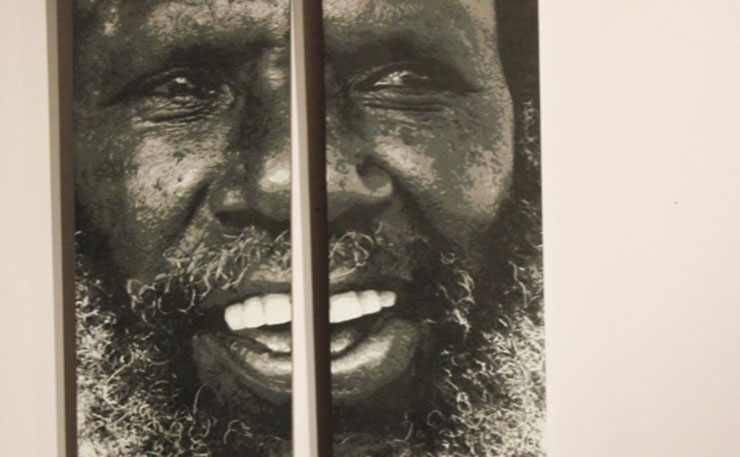You can’t put a price tag on land theft. Or can you? Georgia McGrath from Marque Lawyers looks at a Noongar claim in the Federal Court that might change Native Title laws forever.
In The Castle, Darryl Kerrigan captured the essence of belonging when he said, “It’s not a house – it’s a home”. The notion that the monetary value of land is not a measure of the true value of the spiritual and cultural connection to country, of which that land is just the geographic marker, will soon be tested in a case of major importance.
A group of Noongar people have filed a compensation claim in the Federal Court that could potentially see the West Australian government pay out $290 billion in damages – that’s 10 times the entire yearly revenue of WA and more than any amount paid in compensation under the Native Title Act, ever.
The claimants are seeking compensation for the spiritual damage that they have suffered as a result of being dispossessed of their traditional lands and the subsequent extinguishment of their native title rights to that land.
The Noongar people were once the caretakers of a vast area of land in WA’s south west covering over 19 million hectares. When white settlers arrived, they didn’t see the delicate and reciprocal balance of belonging and husbandry that was integral to the Noongar’s existence. Instead, they saw an opportunity for vast prosperity born of the resources extracted from under the earth and the cities erected above it.
Houses were built, mines dug, and as the Noongar people’s traditional way of life was overrun, their title to over 98 per cent of their land was snuffed out.
Along with that extinguishment came a deep, irrevocable and wrenching loss of cultural connection to land and the associated traditions that had been practised on that land by the Noongar for tens of thousands of years.
As there was no negotiation or treaty during the process of their dispossession, the Noongar people now want compensation.
It is difficult to see how money (even such a vast sum) can answer for that kind of loss, but the native title regime admits that it can only offer an imperfect solution to an historical injustice.
The claimants have calculated their losses at $15,000 per hectare – hence the massive size of the claim which, if granted, would be the biggest in Australian history. The WA Premier has described the claim as “pretty extreme” and “way over the top” (in other words “tell ‘em they’re dreamin”…), so we can assume the WA Government won’t be paying up without a fight.
The success of the Noongar claim will rest heavily on the precedent set by the Timber Creek decision, handed down by the High Court in March last year. The Ngaliwurru and Nungali peoples were granted approximately $2.5 million in compensation, making the decision one of the most significant in the native title world since Mabo.
The High Court in the Timber Creek case broke down the losses suffered into two types: economic loss and cultural loss. It was relatively simple for the court to assess how much economic loss the groups had suffered as a result of their dispossession, as they could use the freehold value of the land as a tangible measure of the dollar value of the extinguished native title rights.
But it is a trickier business altogether to capture the magnitude of cultural loss and then assign a dollar figure to that loss. The Timber Creek case saw the applicants bring evidence of their cultural loss, manifested in the form of loss of connection to land, interruption of Dreaming tracks, interference and exclusion from sacred sites, amongst other damaging actions.
The trial judge then considered that the cultural damage was akin to taking a single very large painting, and then punching holes through it. The damage is then measured not by reference to the individual holes in isolation, but by the effect of those holes in aggregate have on the whole painting.
It’s suitably violent language and it recognises that cultural loss must be understood by reference to an Indigenous person’s sense of loss of spiritual connection to land more generally.
This judicial trend towards a deeper understanding and recognition of the uniqueness of Aboriginal connection to country has recently received the High Court’s imprimatur with its decision in Love v Commonwealth, which imported the concept for the first time inside the framework of the Australian Constitution as a feature uniquely applicable to Aboriginal and Torres Strait Islander people.
The High Court pointed out in the Timber Creek judgment that compensation for cultural loss isn’t just about hurt feelings, though one wonders if emotion can be divorced entirely from loss that is so deeply personal to the claimant group. It is a special type of damage that must surely strike at the very identity of those subjected to it.
With the incidence of native title compensation claims likely to grow, the courts will continue to hone their methodology for valuing loss. It’s an approach that takes a whole raft of complex rights, obligations, connections to country, emotions about our shared dark history and tries to boil all of that down to a tangible and finite figure.
But the heart of the Noongar’s case isn’t about legal methodologies and value calculations. It’s about what is owed, with interest, for a colossal theft.
It’s the ‘vibe’, it’s Mabo and it’s another step down the path toward understanding that land is not country and a house is not a home.
Donate To New Matilda
New Matilda is a small, independent media outlet. We survive through reader contributions, and never losing a lawsuit. If you got something from this article, giving something back helps us to continue speaking truth to power. Every little bit counts.




